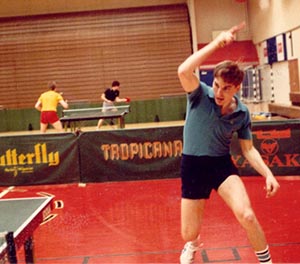North American Youth Olympic Games Qualification – Boys’ Final
Here’s the match, Kanak Jha vs. Jeremy Hazin (17:35, missing first game). This was one of the few top matches I got to see at the US Open, since I was so busy in meetings, coaching, and playing. But it was a great tactical match – basically, Kanak, age 16 but already over 2700 and #90 in the world, gave a clinic in receive and ball placement.
The match epitomizes something I’ve been quoted saying many times: “Tactics isn’t about finding complex strategies to defeat an opponent. It’s about sifting through all the zillions of possible tactics and finding a few simple ones that work.” In this case, Kanak used disarming receives to take away Jeremy’s serve advantage, and then used one seemingly simple tactic that completely dominated the match – attack the middle and wide forehand.
It seems simple, but the execution is far more difficult than it appears. If you just keep going after someone’s middle or forehand, they can anticipate it, and jump on that shot, so you have to be ready to switch back and forth. If you attack too aggressively, you make mistakes; if not aggressive enough, opponent has time to react.
Watch the rallies, and you’ll see over and over that when Kanak attacks the middle, Jeremy would struggle to react, either going for erratic counterloops (ones he’d likely made if the attack were to a corner) or awkward blocks. If Jeremy hedged over to cover the middle, usually with his forehand, Kanak immediate attacked the opened forehand corner.


 Photo by Donna Sakai
Photo by Donna Sakai


